- EasyCard
- Trade
- Help
- Announcement
- Academy
- SWIFT Code
- Iban Number
- Referral
- Customer Service
- Blog
- Creator
Stablecoin International Payment Beginner Guide: How to Safely Use USDT for Cross-Border Transactions
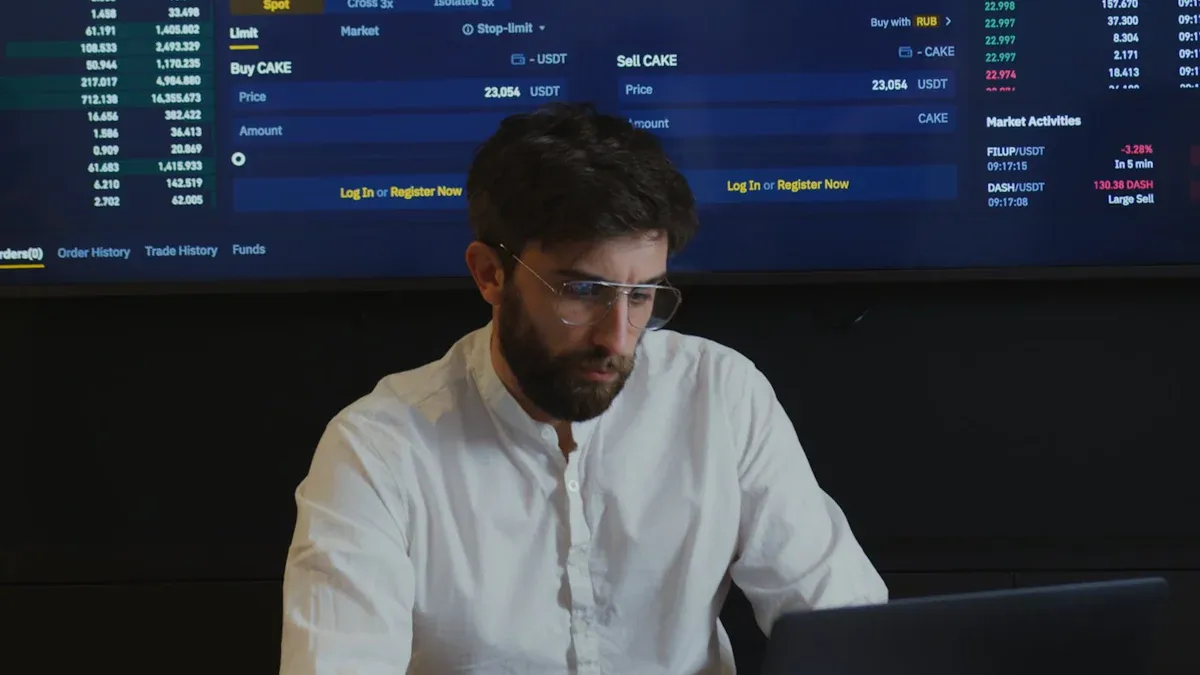
Image Source: pexels
The stablecoin market is experiencing explosive growth. It is projected that in 2024, its annual transfer volume will reach $18.4 trillion, with the market size already exceeding $200 billion.
This guide provides you with a clear and secure operation framework to help you confidently complete your first stablecoin (USDT) international payment. Your successful transaction relies on two cornerstones: choosing a compliant trading platform and strictly following security norms at every step.
Core Points
- USDT international payments are faster and lower cost than traditional bank wires, suitable for international trade and paying freelancers.
- When choosing a USDT trading platform, prioritize the platform’s compliance, security technology, user reputation, liquidity and reserve transparency, and customer service quality.
- When performing USDT transfers, be sure to confirm the recipient address and network type (such as TRC20 or ERC20); choosing the wrong network will cause permanent fund loss.
- Protect your personal wallet’s private key and seed phrase well; this is the foundation of asset security and must never be disclosed to anyone.
- Be vigilant against phishing websites and fake apps; only download from official channels and stay alert to “risk-free high-return” promises.
Why Use USDT for International Payments?
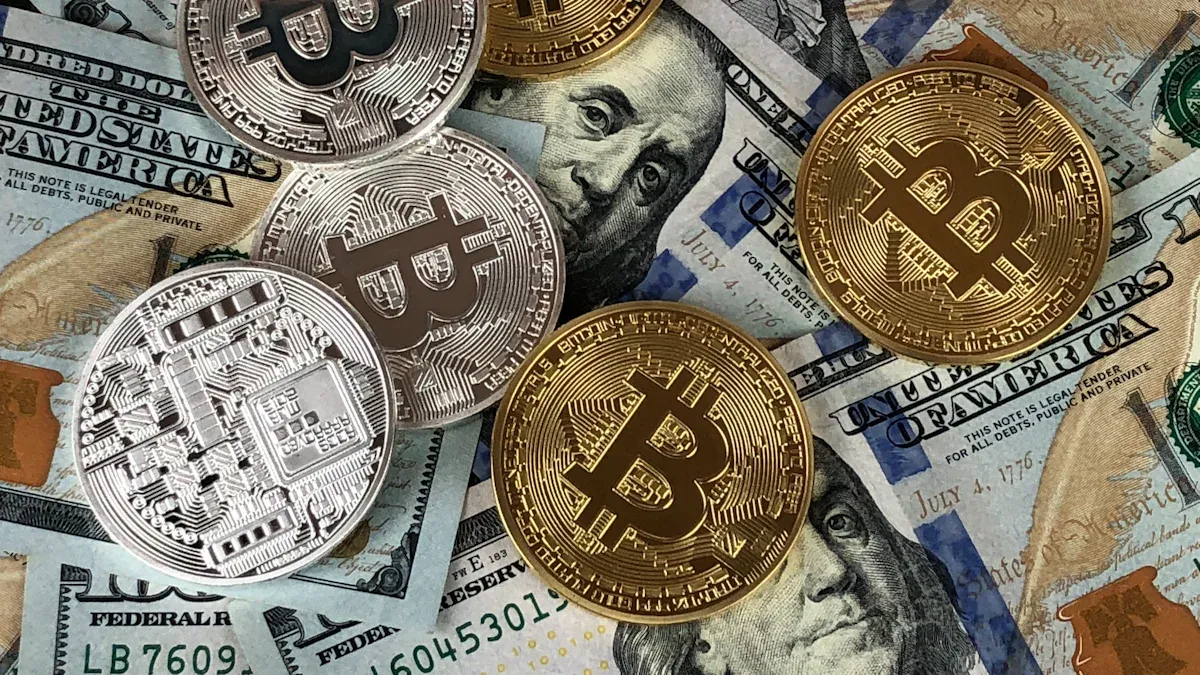
Image Source: pexels
Traditional international bank wires are usually time-consuming and expensive. Funds need to pass through multiple intermediary banks, with each link generating fees and extending wait times. Stablecoin (USDT) international payments provide an efficient alternative, completely changing the mode of cross-border fund flows.
Core Advantages and Application Scenarios of USDT
The biggest advantage of USDT lies in its efficiency and low cost. It utilizes blockchain technology, allowing you to bypass complex bank networks and achieve point-to-point instant transactions. This means your funds can flow 24/7, unrestricted by bank operating hours.
You can intuitively see the difference between USDT and traditional bank wires:
| Attribute | USDT (TRC-20 Network) | Bank Wire |
|---|---|---|
| Transfer Cost | Usually less than 2 USD | 25-50 USD or more |
| Arrival Time | Within minutes | 1-5 business days |
This advantage is particularly prominent in the following scenarios:
- International Trade Settlement: Import and export enterprises can use USDT to pay global suppliers. For example, African importers can quickly pay Chinese manufacturers for goods, avoiding high wire fees and delays.
- Paying Global Freelancers: Enterprises can instantly pay salaries to remote employees or contractors in different countries. For recipients living in regions with unstable local currencies, receiving value-stable USDT is especially attractive.
Other Compliant Stablecoin Options (such as USDC)
Besides USDT, there are other compliant stablecoins worth your attention on the market. Among them, USDC (USD Coin) is a major choice. USDC is issued by regulated US financial institutions and is known for its high-transparency reserve audits. For users prioritizing compliance and reserve transparency, USDC is a reliable alternative.
Potential Risks: Volatility, Security, and Regulation
Note: Although stablecoins bring convenience, you must recognize potential risks. Security is always the top priority.
Before starting transactions, be sure to understand the following three points:
- Price Volatility Risk: Although USDT aims for a 1:1 USD peg, slight depegging may occur in extreme market conditions.
- Operational Security Risk: Transfer errors, phishing scams, or platform security vulnerabilities may lead to asset loss.
- Regulatory Uncertainty: Global stablecoin regulatory policies are still developing, and future regulatory changes may affect their use.
Core Standards for Choosing a Secure USDT Trading Platform
Choosing a trading platform is your first and most critical step in safely conducting stablecoin (USDT) international payments. A wrong decision may expose your funds to huge risks. Please use the following five core standards to systematically evaluate every candidate platform.
Standard One: Review Regulation and Compliance
Compliance is the first barrier to protecting your fund security. A platform under strict regulation means it must comply with local financial laws, providing users with basic legal protection.
You need to proactively review the platform’s regulatory information. Usually, you can find its registration location and held financial licenses in the website footer or “About Us” page. Look for key licenses like Electronic Money Institution (EMI).
Focus: Emerging Regulatory Frameworks
Global regulation is evolving rapidly. For example, the EU’s Markets in Crypto-Assets Regulation (MiCA) imposes strict requirements on stablecoin issuers. These requirements aim to protect consumers and maintain financial stability.
Key requirements under the MiCA framework include:
- Issuers must obtain authorization from National Competent Authorities (NCA).
- Need to publish an approved whitepaper detailing project information.
- Must hold sufficient asset reserves and establish clear custody and investment policies.
- Establish sound governance structures and complaint handling mechanisms.
However, you need to note that not all platforms and stablecoins meet these high standards. For example, USDT has not yet obtained the EU’s MiCA EMI license, which has led some EU platforms to consider or already delist it. In contrast, in New York State, USDT is prohibited from trading due to lack of approval. Choosing a platform operating compliantly in strict jurisdictions is crucial.
Standard Two: Evaluate Security Technology Strength
Strong technical strength is the foundation for platforms to resist hacker attacks and internal risks. You need to assess whether the platform adopts industry-top security measures.
The following are several core technical concepts you must understand:
- Cold-Hot Wallet Separation: Platforms should store the vast majority (usually over 90%) of user funds in offline cold wallets to isolate network risks. Only a small amount is stored in hot wallets for daily withdrawals.
- Multi-Signature (Multi-Sig): This technology requires multiple approvals to transfer funds, effectively eliminating single points of failure. For example, a “2-of-3” multi-signature wallet needs at least two of three independent key holders to agree for transaction execution. Even if one key is stolen, your funds remain safe.
- Two-Factor Authentication (2FA): This is the basic requirement for protecting your personal account security. You must enable 2FA to add an extra security verification for logins and withdrawals.
Top trading platforms regularly conduct third-party security audits and penetration tests, and set up bug bounty programs to proactively discover and fix vulnerabilities. You can refer to reports from professional rating agencies (like CER.live) to evaluate platform security.
| Exchange | CER Rating | Security Highlights |
|---|---|---|
| WhiteBIT | AAA | Perfect security score, conducts continuous security tests and bug bounty programs. |
| Bitget | AAA | Prioritizes user fund protection, regular security audits and advanced risk management. |
| Coinbase | AAA | Globally trusted and compliant, regular security audits. |
| Binance | AAA | Strong community trust, regular security audits and bug bounty programs. |
| Kraken | AAA | Known for strict security practices, regular security audits. |
Historical lessons are painful. Multiple past exchange hacks have caused users irreparable losses.
These events repeatedly remind us how important it is to choose a platform with massive investment in security technology and proven track records.
Standard Three: Examine User Reputation and History
Real community feedback and the platform’s operational history are important references for evaluating reliability. A platform with long-term stable operation and good reputation is usually more trustworthy.
You can visit third-party review sites like Reddit and Trustpilot to view real user evaluations. When reading reviews, note the following:
- Comprehensive View: Do not just look at positive or negative reviews. A normal platform always receives various feedback. The key is how the platform responds to and handles negative reviews.
- Identify Fake Reviews: Be wary of extreme language or reviews lacking specific details. Real feedback usually describes specific usage scenarios and issues encountered.
- Focus on Core Issues: Pay attention to discussions on core problems like withdrawal delays, account freezes, and customer service responses. For example, on Trustpilot, some users praise a platform for its “simple and intuitive dashboard”, but others complain about “still waiting for my withdrawal”. These are information you need to weigh.
Tip: A platform operating over five years without major security incidents is usually more reliable than one established just a few months ago. Time is the touchstone for testing platform stability.
Standard Four: Analyze Liquidity and Reserves
Liquidity determines your transaction costs and efficiency, while issuer reserve transparency relates to the foundation of stablecoin value.
1. Platform Trading Depth
Trading depth (Market Depth) refers to the number of buy and sell orders at different price levels. It directly affects your transaction slippage.
| Aspect | Deep Market | Shallow Market |
|---|---|---|
| Liquidity | High | Low |
| Large Transaction Price Impact | Low | High |
| Transaction Execution | Smooth | Difficult |
| Slippage Cost | Minimal | Significant |
In a deep market, you can easily complete large transactions without significantly affecting prices. In contrast, in a shallow liquidity market, a large sell order may exhaust all buy orders, causing prices to drop sharply and bringing you extra losses. Therefore, choose large platforms with good depth in mainstream trading pairs (like BTC/USDT).
2. Issuer Reserve Transparency
USDT’s value peg relies on reserves held by its issuer (Tether). You need to focus on the transparency and credibility of its reserve reports.
Warning: Regulatory bodies like the US SEC have issued warnings that many current “proof of reserves” reports are not strict audits with limited reliability. You need to critically review these reports.
An ideal reserve report should include the following information:
- Reserve Composition: Detail types of reserve assets, such as cash, US Treasuries, etc.
- Audit Frequency and Quality: Conducted regularly by independent third-party accounting firms following recognized attestation standards.
- Custody Institutions: Disclose information on financial institutions holding reserve assets.
You can compare practices of different stablecoin issuers. For example, USDC is generally considered superior to USDT in reserve transparency and audit frequency.
| Feature | USDC Practices | USDT Practices |
|---|---|---|
| Reserve Composition | Strictly limited to cash and short-term US Treasuries | Uses more diversified reserve composition |
| Audit Frequency and Type | Regular monthly third-party audits | Relies on attestations rather than full audits |
| Bank Partnerships | All reserves in regulated financial institutions | Lower transparency in bank partner relationships |
Although USDT is currently the largest market share stablecoin, you must clearly recognize controversies in its reserve transparency when choosing platforms and trading.
Standard Five: Test Customer Service Quality
When you encounter transfer delays, account issues, or other emergencies, a responsive and professional customer service team is crucial. Poor customer service may leave you helpless when problems occur.
Before investing large funds, test the platform’s customer service with small issues. For example, ask about transaction fees or KYC process details.
You can evaluate service quality from the following aspects:
- Response Time: For online chat or email, the general expectation in the financial industry is within 2-4 hours. If a platform takes days to reply, this is a danger signal.
- Professionalism: Are customer service answers clear, accurate, and truly solving your problems?
- Service Channels: Does the platform provide multiple contact methods like online chat, email, and phone support?
A platform that puts users first will invest resources in customer service. Do not overlook this seemingly secondary but critical evaluation standard.
Stablecoin (USDT) International Payment: Secure Operation Guide
After selecting a trustworthy platform, the next step is practical operations. This guide will lead you through every key step from account opening to final payment, ensuring your first stablecoin (USDT) international payment transaction is safe and smooth.
Step One: Platform Account Opening and Identity Verification (KYC)
Any compliant trading platform, such as Biyapay, will require you to complete identity verification, known as “Know Your Customer” (KYC). This is not deliberate difficulty by the platform but a legal obligation to fulfill anti-money laundering (AML) and counter-terrorism financing (CFT) regulations, and a key measure to protect your account security.
The core role of the KYC process is:
- Prevent Illegal Activities: By verifying user identities, platforms can effectively block money laundering, fraud, and other illegal fund inflows, maintaining financial system stability.
- Secure Accounts: KYC ensures only you can access and operate your account; in case of security issues, platforms can assist recovery based on verified identity information.
- Comply with Regulatory Requirements: In jurisdictions like Hong Kong, all licensed virtual asset trading platforms must strictly implement KYC procedures, including customer identity recognition, risk assessment, and continuous transaction monitoring.
What do you need to prepare for KYC?
Usually, you need to provide the following two types of documents to complete verification:
- Identity Proof Documents: Government-issued valid documents, such as your passport or ID card.
- Address Proof Documents: Recent (usually within three months) utility bills or bank statements clearly showing your name and residential address.
The platform will collect your full name, date of birth, address, and other personal information and compare it with submitted documents. Additionally, your information will be checked against official databases of Politically Exposed Persons (PEP) and sanctioned individuals to complete comprehensive risk assessment.
Step Two: Purchase USDT Through Compliant Channels
After completing identity verification, you can purchase USDT with your local fiat (such as USD). Compliant platforms provide multiple purchase channels; choose based on your needs.
- P2P (Peer-to-Peer) Trading: This is one of the most common methods. In P2P markets on platforms like Biyapay, you can trade directly with other users. The platform acts as an intermediary providing escrow services, ensuring the counterparty releases USDT to your account after you pay. This method supports bank transfers, e-wallets, and other payment methods with usually low fees.
- Credit or Debit Card Purchase: Some platforms partner with payment providers like MoonPay to allow direct USDT purchases with Visa or Mastercard credit/debit cards. This method is fast and convenient but handling fees may be relatively high.
- Bank Transfer: You can also wire funds to the platform account via bank and use these funds to buy USDT in the spot market.
Understand Transaction Fees
During purchases, you will encounter different types of fees. Understanding them helps control costs better:
- Transaction Fees: Fees charged by the platform per transaction, divided into taker fees and maker fees.
- Fiat Conversion Fees: Additional conversion fees when buying crypto with fiat in some channels.
- Spread: Difference between buy and sell prices, a hidden cost.
- Withdrawal Fees: Fixed network fees when transferring USDT out of the platform.
Step Three: Execute Transfer and Network Selection
After purchasing USDT, you can send it to the recipient. This is the most error-prone link in the process; stay extremely vigilant. The core is correctly choosing the transfer network.
USDT exists on multiple blockchain networks, most commonly ERC20 (Ethereum network) and TRC20 (Tron network). They differ greatly in speed, fees, and address formats.
| Feature | TRC20 (Tron Network) | ERC20 (Ethereum Network) |
|---|---|---|
| Transaction Speed | Very fast (usually seconds to minutes) | Slower (may take minutes or longer during congestion) |
| Transaction Fees | Very low (usually around 1-2 USD) | Higher (up to 15-35 USD during congestion) |
| Gas Fee Model | Uses energy and bandwidth (staking TRX reduces costs) | Requires ETH as Gas fee |
| Applicable Scenarios | Small, high-frequency payments prioritizing low cost and efficiency | DeFi applications, Ethereum ecosystem interactions |
Warning: Addresses must never be mixed!
Choosing the wrong network will cause permanent asset loss with no recovery. Before transferring, confirm the address’s corresponding network with the recipient multiple times.
- TRC20 Address Starts with uppercase
T.- ERC20 Address Starts with
0x.
During transfer, carefully check every character, preferably using “copy-paste” and visually verifying the beginning and end of the address for complete match.
Step Four: Secure Receipt and Cash-Out for Recipients
For recipients, securely receiving USDT and converting it to local fiat is the final step.
1. Provide Correct Receipt Address Recipients need to log into their trading platform (like Biyapay), go to assets or wallet page, select USDT, and click “deposit” or “receive.” The platform will require selecting a network (e.g., TRC20) and generate a network-specific receipt address. Recipients need to provide this complete address and corresponding network name to you.
2. Convert USDT to Local Fiat After USDT arrives, recipients can follow these steps to convert to fiat and withdraw:
- Enter Trading Market: In the platform’s P2P or spot market, select a trading pair like USDT/USD.
- Sell USDT: Create a sell order to exchange received USDT for equivalent fiat (like USD).
- Withdraw Fiat: After completion, fiat deposits into the recipient’s platform account. They can then initiate withdrawal to their bound bank account, such as one opened at a Hong Kong licensed bank.
The entire process usually completes in minutes to hours, depending on platform efficiency and banking systems.
New Choice: Consume with USDT Payment Cards
Besides traditional transfers and cash-outs, a more direct consumption method is emerging: USDT payment cards. Crypto payment cards launched by companies like Biyapay allow direct daily spending of USDT in accounts.
When swiping at any merchant accepting Visa or Mastercard (online or offline), the payment system automatically converts the required USDT amount to local fiat in real-time. This greatly simplifies the process, allowing global spending of digital assets without pre-conversion.
| Company Name | USDT Support | Global Acceptance/Available Regions |
|---|---|---|
| Biyapay Card | Direct Spending | 170+ countries |
| Bitget Wallet Card | Direct Spending | 130+ countries |
| Wirex Card | Direct Spending | 130+ countries |
| Crypto.com Card | Via Conversion | 40+ countries |
| Binance Card | Direct Spending | European Economic Area and Latin America |
This payment card provides a seamless bridge connecting the digital asset world and traditional financial consumption scenarios, an important direction for future stablecoin applications.
Common Scams and Advanced Risk Prevention
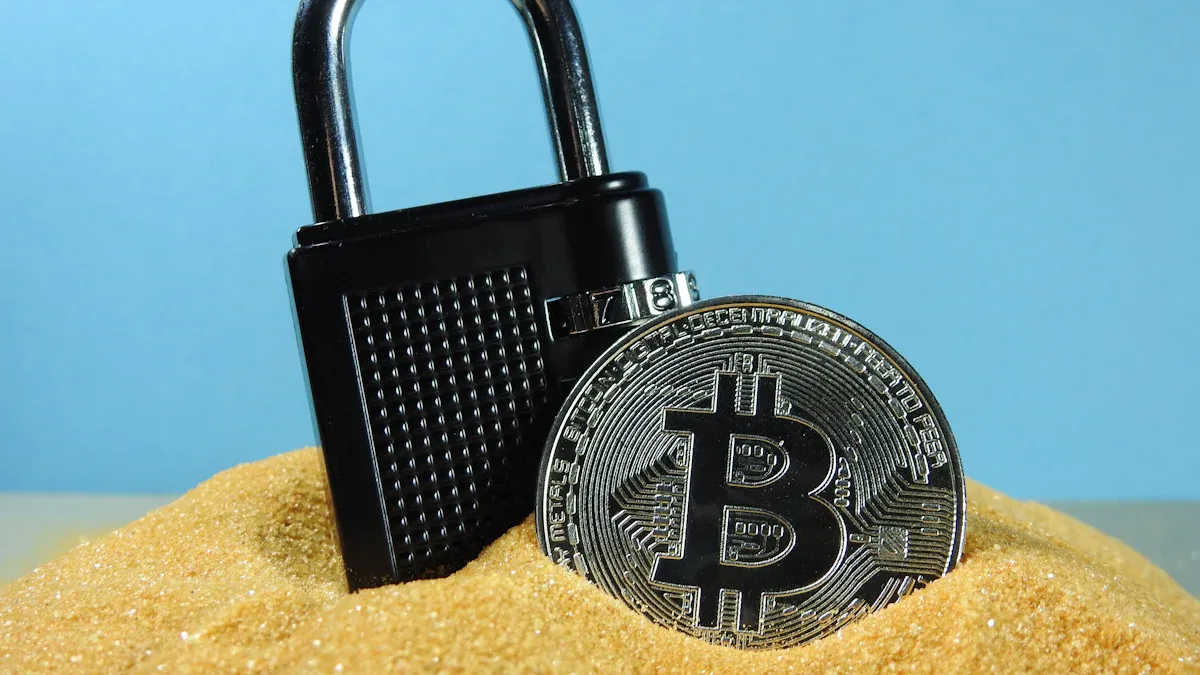
Image Source: unsplash
After mastering the operation process, you also need to build a strong psychological defense to identify and avoid various scams. The responsibility for protecting assets ultimately falls on yourself.
Identifying Phishing Websites and Fake Apps
Scammers are good at disguise, creating websites or apps extremely similar to legitimate platforms to steal your login information and assets. You can identify these traps through the following features:
- Unrealistic Promises: Be wary of platforms promising “risk-free high returns” or unusually low fees.
- Lack of Regulatory Information: Fake platforms usually do not comply with KYC and cannot provide regulatory license information.
- Weak Security Measures: They lack basic security features like two-factor authentication (2FA).
- Opaque Information: You cannot find clear information about the operating team, company location, or fund storage methods.
Tip: Always download apps through official websites or official app stores. Never click links from unknown SMS or emails.
Beware of Counterparty Risks in OTC Trading
Although off-platform P2P trading (OTC) may offer more flexible prices, it comes with extremely high counterparty risks. Once you transfer fiat or USDT to the counterparty, if they fail to fulfill the transaction, recovery is difficult. For safety, always use reputable platform-built P2P markets; platforms provide escrow services to ensure fair and secure transactions.
Asset Secure Storage: Personal Wallets vs. Platform Wallets
Where you store USDT determines your control over assets. You need to understand the difference between platform wallets and personal wallets.
| Feature/Wallet Type | Platform Wallet (Custodial) | Personal Wallet (Non-Custodial) |
|---|---|---|
| Advantages | Simple setup, customer service can assist access recovery, no network fees for internal transactions. | You fully own and control assets, recoverable on any device via seed phrase. |
| Disadvantages | Assets controlled by platform; if hacked or bankrupt, your assets may be affected. | You are 100% responsible for security; losing seed phrase means losing all assets. |
For long-term storage of large assets, strongly recommend personal wallets, especially hardware wallets. Hardware wallets store your private keys offline in secure chips, completely isolating from network attacks, the current gold standard for security.
Additionally, some new wallets (like Binance Web3 Wallet) use MPC technology to manage by splitting private keys, aiming to balance security and convenience, providing more choices.
Core Principle: Protect Your Private Key and Seed Phrase
Warning: Private keys and seed phrases are the sole proof of ownership of your assets. Whoever has them owns the assets.
Treat them as the final key to a bank vault and follow these principles:
- Physical Backup: Write seed phrases with pen on high-quality paper or etch on metal plates for fire and water resistance.
- Offline Storage: Store physical backups in absolutely secure offline places like fireproof safes.
- Never Share: Never disclose your private keys and seed phrases to anyone or any website via screenshots, photos, or text.
You now have mastered the basic knowledge for safely conducting stablecoin (USDT) international payments. Always remember three core principles:
- Cautiously choose compliant platforms.
- Strictly follow operation processes.
- Continuously learn risk prevention knowledge.
USDT payments are efficient and convenient, but security is always first. We encourage starting with small transactions to gradually familiarize yourself with the process and gain experience. This way, you can confidently use stablecoins for global payments.
FAQ
What if I accidentally send USDT to the wrong address?
You will likely permanently lose the funds. Blockchain transactions are irreversible. Therefore, you must double-check the address before transferring to ensure no mistakes.
Can I perform USDT transfers completely for free?
You cannot transfer completely for free. Every transaction requires paying a miner fee (Gas Fee) to the blockchain network. You can choose low-fee networks like TRC20 to effectively control costs.
Is using USDT for international payments legal?
Laws vary by country and region. In some regions, using stablecoins for payments is compliant; in others, it may face restrictions. You are responsible for understanding and complying with local legal requirements.
Should I choose USDT or USDC?
USDT has the largest market share and liquidity. USDC is known for higher reserve transparency and compliance. You can choose based on your preferences for liquidity and risk transparency.
*This article is provided for general information purposes and does not constitute legal, tax or other professional advice from BiyaPay or its subsidiaries and its affiliates, and it is not intended as a substitute for obtaining advice from a financial advisor or any other professional.
We make no representations, warranties or warranties, express or implied, as to the accuracy, completeness or timeliness of the contents of this publication.

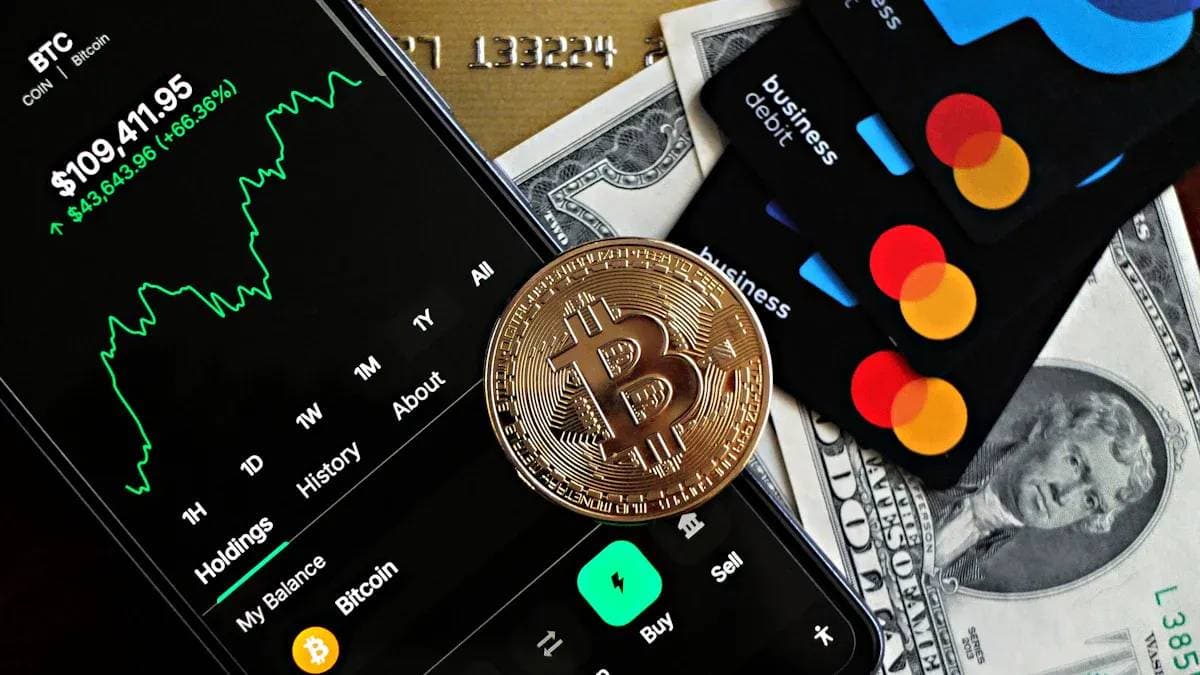
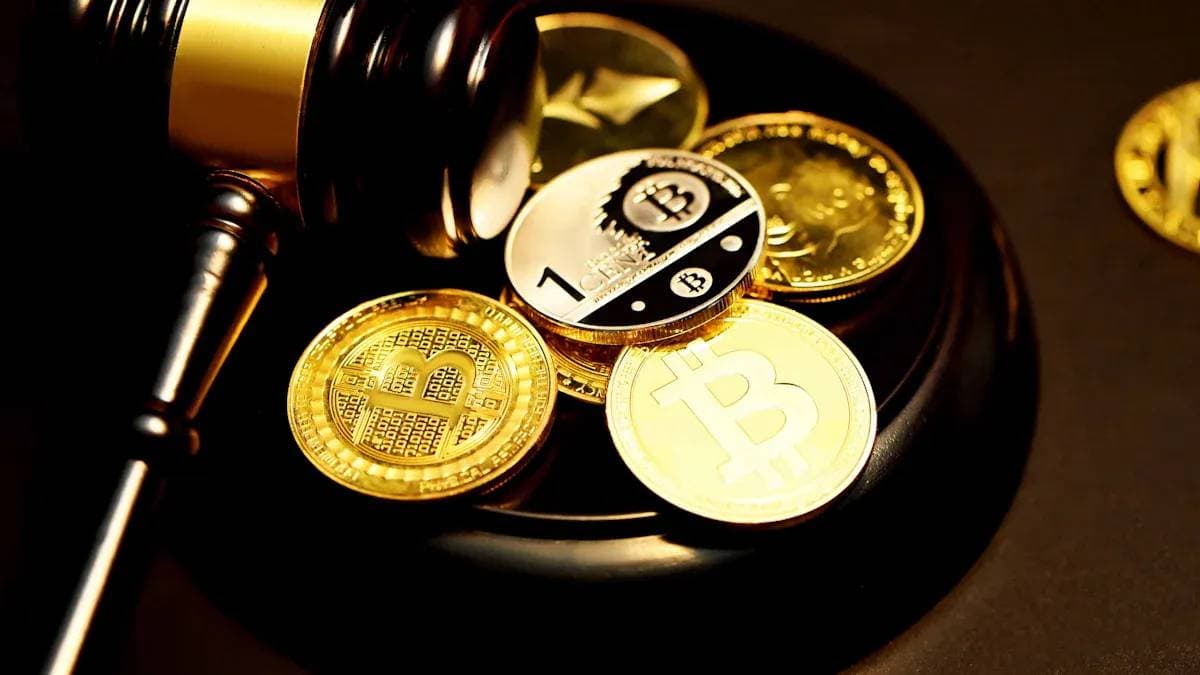
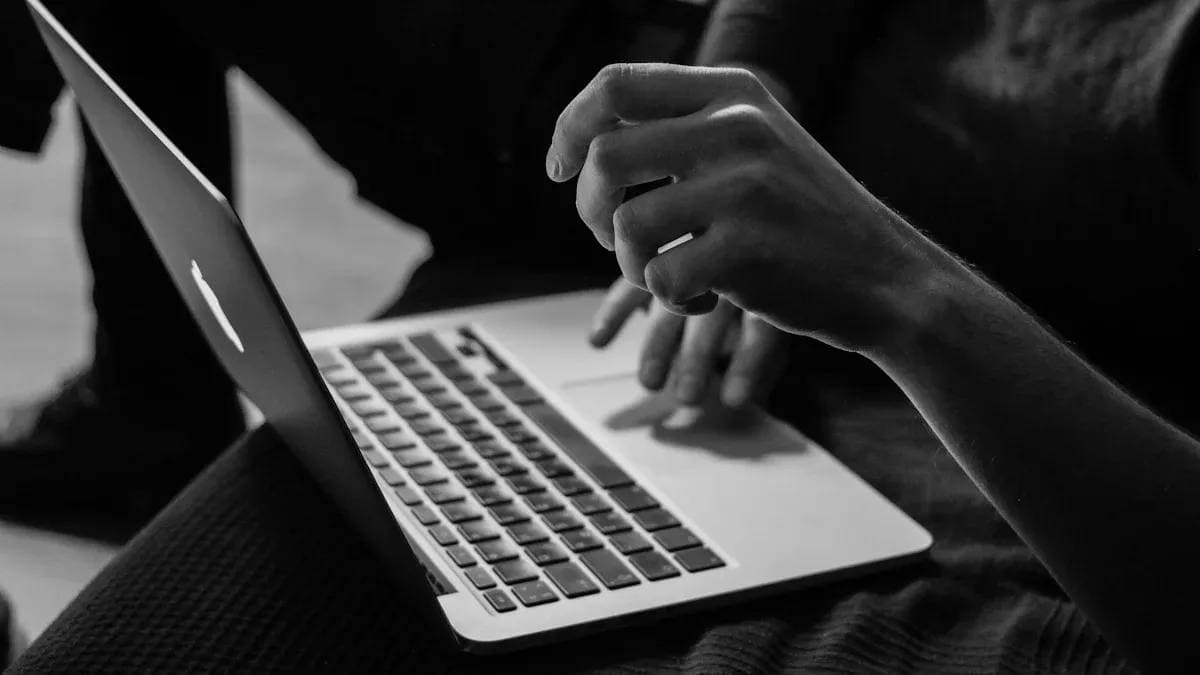
Contact Us
Company and Team
BiyaPay Products
Customer Services
BIYA GLOBAL LLC is a licensed entity registered with the U.S. Securities and Exchange Commission (SEC No.: 802-127417); a certified member of the Financial Industry Regulatory Authority (FINRA) (Central Registration Depository CRD No.: 325027); regulated by the Financial Industry Regulatory Authority (FINRA) and the U.S. Securities and Exchange Commission (SEC).
BIYA GLOBAL LLC is registered with the Financial Crimes Enforcement Network (FinCEN), an agency under the U.S. Department of the Treasury, as a Money Services Business (MSB), with registration number 31000218637349, and regulated by the Financial Crimes Enforcement Network (FinCEN).
BIYA GLOBAL LIMITED is a registered Financial Service Provider (FSP) in New Zealand, with registration number FSP1007221, and is also a registered member of the Financial Services Complaints Limited (FSCL), an independent dispute resolution scheme in New Zealand.



















